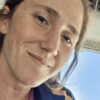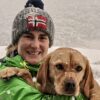CT Case 063
A 86-year-old lady tripped over while walking, landing face first on the ground.
She has sustained multiple abrasions to her face, an eyelid laceration and she has midline c-spine tenderness from base of skull to C5 level with reluctance to move her neck.
She has a normal neurological examination.
A CT scan of the cervical spine is performed



Describe and interpret the CT images
Clinical Pearls
C2 (dens) fractures make up 15% of all C-spine fractures and are the most common c-spine fracture of the elderly.
The combination of stiffer lower c-spine and reduced bone density mean the upper cervical spine is more susceptible to bony and ligamentous injury.
In the younger population, odontoid fractures are usually the result of high-energy trauma (eg fall from height or MVA). Whereas, in the elderly, this fracture usually occurs due to a low energy mechanism, such as a trip and fall face first causing hyperextension of the neck.
Classification of this fracture is the Anderson and D’Alonzo
Type I – Avulsion of the tip by the alar ligaments. This is very rare, but usually stable.
Type II – Occurs at the base of the odontoid process. This is the most common type, and is more prone to non-union.
Type III – Extends into body of the axis. And has good healing potential.

The type of fracture, presence of osteoporosis, arthrosis of the C1/2 joints, and general condition of the patients are all important modifiers in determining operative vs non-operative management.
In patients >85 years old, the mortality has been reported to be higher in the operative group compared to conservative treatment.
This patient was managed conservatively with an Aspen collar for 6-8 weeks.
References
- Niknejad MT. Anderson and D’Alonzo classification of odontoid process fracture. Radiopaedia
- Gonschorek O, Vordemvenne T, Blattert T, Katscher S, Schnake KJ; Spine Section of the German Society for Orthopaedics and Trauma. Treatment of Odontoid Fractures: Recommendations of the Spine Section of the German Society for Orthopaedics and Trauma (DGOU). Global Spine J. 2018 Sep;8(2 Suppl):12S-17S
TOP 100 CT SERIES
Emergency Medicine Education Fellow at Liverpool Hospital NSW. MBBS (Hons) Monash University. Interests in indigenous health and medical education. When not in the emergency department, can most likely be found running up some mountain training for the next ultramarathon.
Dr Leon Lam FRANZCR MBBS BSci(Med). Clinical Radiologist and Senior Staff Specialist at Liverpool Hospital, Sydney
Sydney-based Emergency Physician (MBBS, FACEM) working at Liverpool Hospital. Passionate about education, trainees and travel. Special interests include radiology, orthopaedics and trauma. Creator of the Sydney Emergency XRay interpretation day (SEXI).
Provisional fellow in emergency radiology, Liverpool hospital, Sydney. Other areas of interest include paediatric and cardiac imaging.







